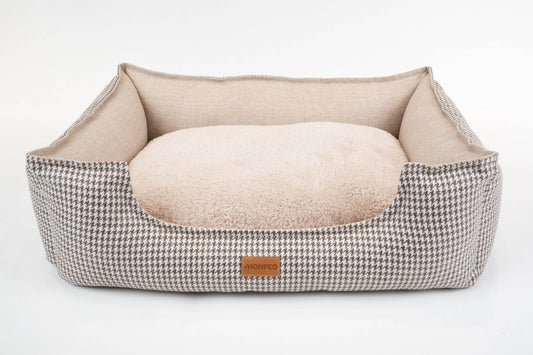Pet insurance is designed to give you protection and peace of mind in the event of an expensive or unexpected vet bill. However, many owners find it stressful navigating the wide range of policies and providers on offer.
Getting to know the basics before you shop will help you choose the right insurance for your pet. Here’s a list of common questions to get you started:
What does third-party liability mean?
A third-party liability policy will not cover any illness or accident suffered by your pet but will cover injury or damage caused by your pet, provided you have taken all reasonable precautions. Some pet insurance policies – particularly the more expensive ones – will incorporate a third-party liability element, but check the terms and conditions carefully.
What if I choose accident-only cover?
Policies that state they are accident-only will not cover your pet for any form of illness. These policies are usually the cheapest to buy and will only pay out a fixed amount per accidental injury.
What is time limited cover?
A policy limited by time will have an expiry date – usually 12 months – and a maximum amount of money that will be paid out during that time. These policies will cover illness but if your pet develops an ongoing condition, such as arthritis, it will no longer be covered by the policy after the time limit.
A time limited policy is considered the most basic cover for illness.
Should I get maximum benefit cover?
There is no time restriction on a maximum benefit (or ‘condition capped’) policy and instead there is a specified amount that you can claim up to. The maximum benefit is per condition and ongoing conditions can continue to be claimed for until the amount is reached, regardless of how long this takes. Typically, a maximum benefit is around £1,500 but amounts vary depending on provider.
These policies are mid-range in terms of cost but are a good option for pets on regular medication. However, if your pet needs an expensive operation for their condition you could find that you reach the maximum amount quickly and any further expense relating to that condition will not be covered.
Do I need lifetime cover?
This is the most comprehensive cover available for your pet but it comes with the highest price tag. As the name suggests, lifetime cover will cover your pet for any illness or accidental injury for the whole of their life.
A lifetime policy will either have an annual limit per condition or an overall limit amount you can claim but these are reset each year on renewal. Lifetime cover is the best option for chronic conditions as your pet will continue to be covered for life, as long as you renew the policy each year. If you decide to switch provider, any pre-existing conditions are likely to be excluded, so make sure you choose an insurer you are happy to stay with.
If I have more pets - do I need multi-pet cover?
In the same way that motor insurance providers offer multi-car policies for households, pet insurance providers now offer cover to people with several pets on the same policy. A multi-pet policy is usually a good cost-effective option if you have more than one pet as you can choose different levels of cover for each pet.
What is a premium?
This is the cost of taking out an insurance policy for a year. It is often possible to pay this on a monthly basis, however be aware that if you cancel the policy before your year is up you may still be required to pay the rest of the premium.
Your premium will be reviewed each year at renewal. If you have made a claim or your pet’s circumstances have changed, you are likely to see a rise. If you choose to switch provider at this point it is likely that any conditions that had previously been covered will be excluded from your new policy.
What are pre-existing conditions?
A pre-existing condition is defined as any illness or injury your pet suffered prior to you taking out a policy – no matter how long ago. Pre-existing conditions are very unlikely to be covered and failure to disclose them could invalidate your policy should you try to make a claim.
What does excess mean?
This is the amount of money you will be expected to pay when you make a claim, regardless of what you are claiming for. The amount of excess required varies between policies so make sure you know what yours is before you need to make a claim. Just like motor insurance, you can often opt to pay a higher excess to lower your annual premium.
Finally…
When it comes to choosing pet insurance, no two providers are the same and a variety of factors are used to calculate premiums. The most expensive policy will not necessarily be the best choice for your pet. Some insurers will use postcodes to rate customers or gauge risk based on breed – for example some pedigree dogs are more prone to certain health problems. Age is also a consideration and the older a dog or cat is, the more expensive cover is likely to be. It is important to shop around for insurance or to use one of the price comparison websites as a starting point.
Click here to return to the Get Set Pet homepage
If you found this article interesting, why not check out:
Flea & Tick Prevention For Your Cat









